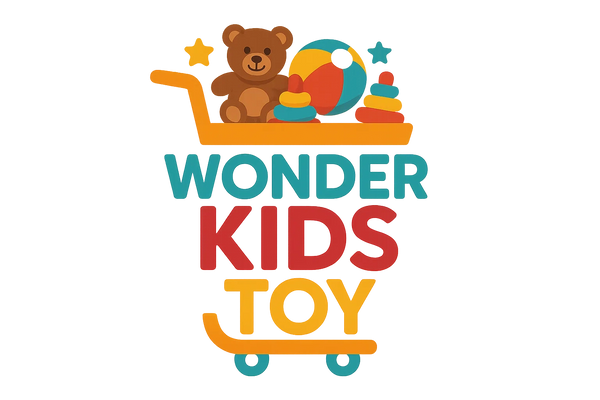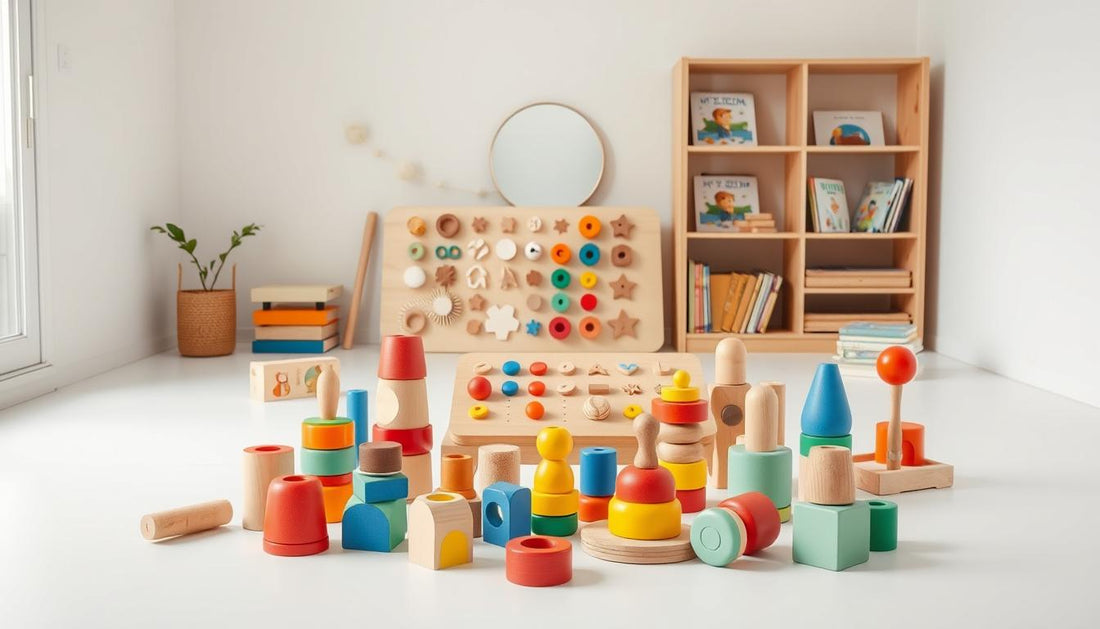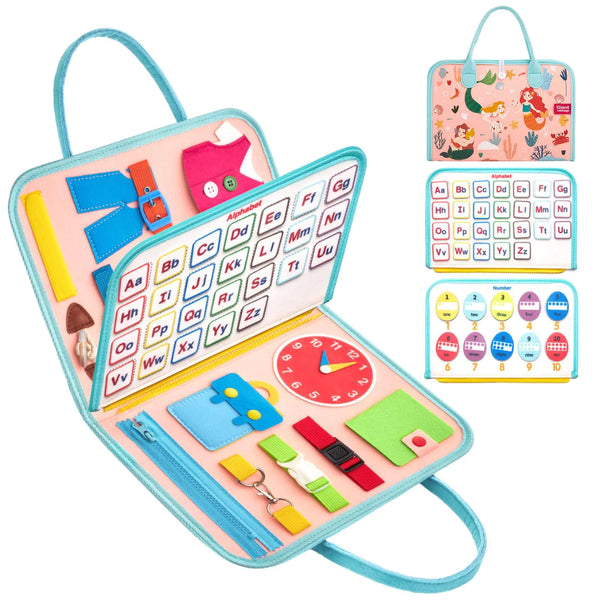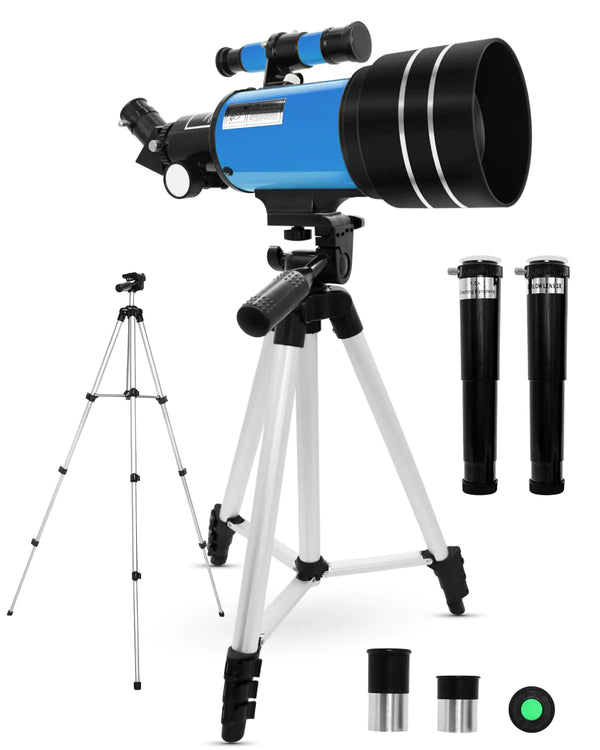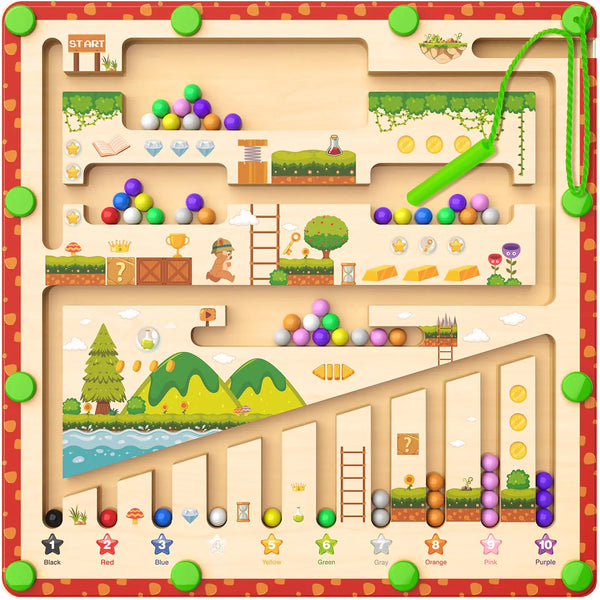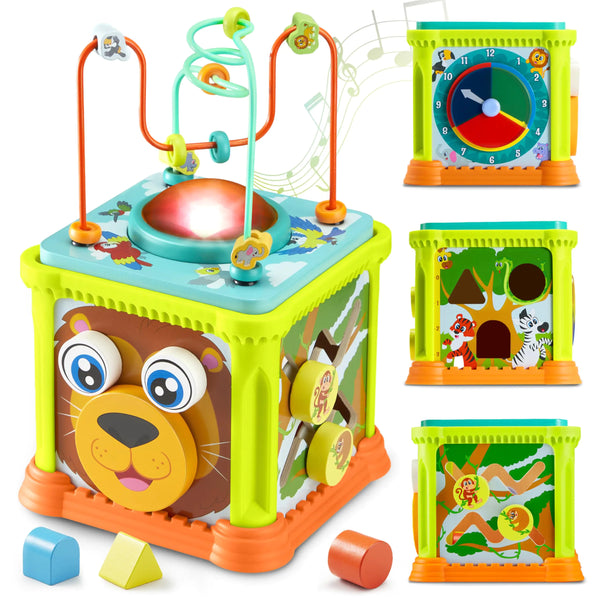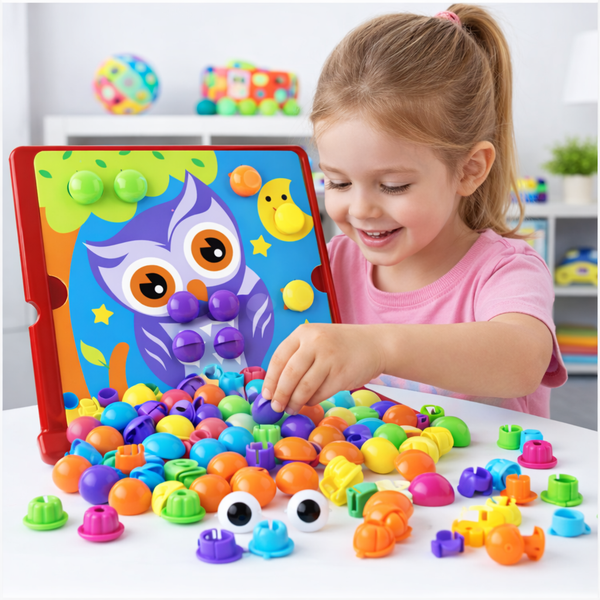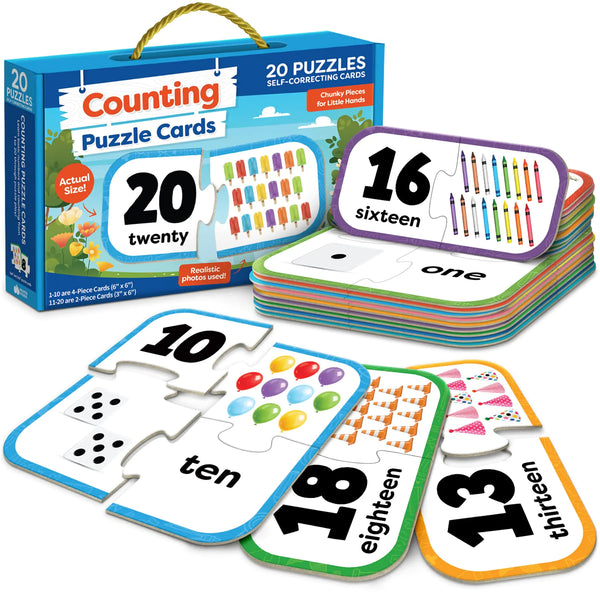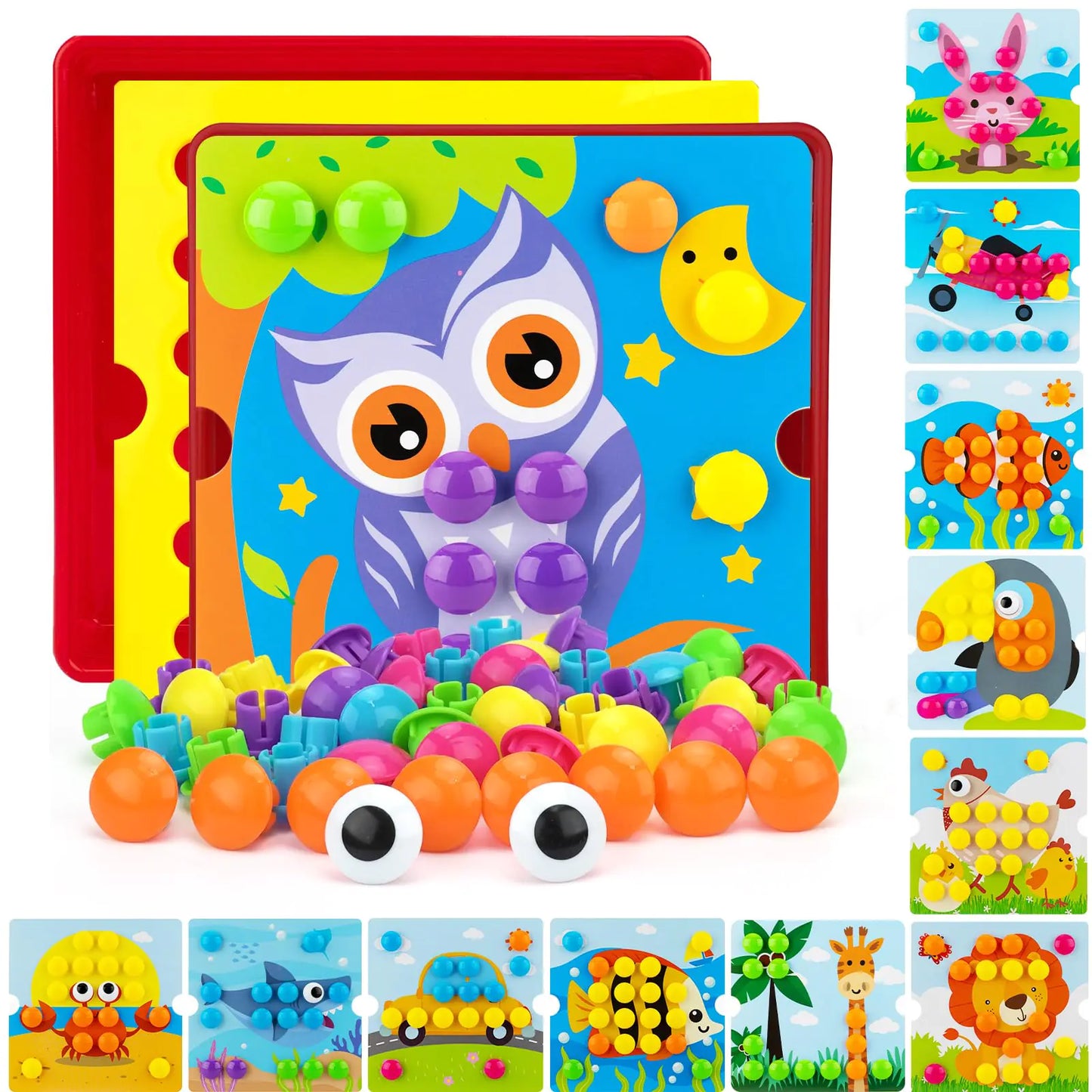As a parent, I'm always on the lookout for educational toys that help my child learn and grow. At one year old, kids are full of curiosity. The right toys can help spark this curiosity.
It's important to find toys that match your child's age and developmental stage. Websites like Montessori Generation are great for this.
I've discovered that learning toys based on the Montessori method work well. These toys promote independence, hands-on learning, and creativity. In this article, I'll share my top picks for educational toys for 1-year-olds. I'll explain how they support your child's growth.
Key Takeaways
- Montessori Toys are designed to promote independent learning.
- Educational toys for 1-year-olds should be safe and durable.
- Learning toys can enhance cognitive development in toddlers.
- The right toys can foster creativity and problem-solving skills.
- Browsing by age and developmental stage is key to choosing the right toys.
Why Montessori Toys Are Great for Toddlers
The Montessori method focuses on hands-on learning. The right toys are key to a toddler's growth. Shumee says Montessori toys help with independent learning and development.
Montessori toys have many benefits for toddlers. They encourage independence, spark curiosity, and improve motor skills. Let's dive into these benefits.
Encouraging Independence
Montessori toys support self-directed learning. Toddlers can learn at their own pace. This helps build confidence and self-esteem.
Wooden sorting toys help kids sort objects by shape, color, or size. They develop problem-solving skills and enjoy playing independently.
Fostering Curiosity
Montessori toys spark curiosity in toddlers. They make kids ask questions and seek answers. Activity cubes with different textures, colors, and sounds are great for this.
Building Motor Skills
Montessori toys also help with motor skills. Stackable blocks and shape sorters improve hand-eye coordination and dexterity. They prepare kids for more complex skills later.
Using Montessori toys in playtime gives toddlers a strong start. It sets them up for academic success and a lifelong love of learning.
Essential Features of Montessori Toys

MINGKIDS Montessori Toys are made with safe materials and encourage open-ended play. They are an excellent choice for parents looking for Montessori-inspired toys for their kids.
When choosing Montessori toys, it's essential to consider the materials. Safe materials are key to ensuring kids can play safely without harm.
Safe Materials
- Non-toxic woods and paints are commonly used.
- Eco-friendly materials support sustainability.
- Durable construction withstands rigorous play.
Choosing eco-friendly toys helps keep kids healthy and teaches them about the environment early on.
Open-Ended Play
Open-ended toys spark creativity and imagination. Unlike single-purpose toys, they can be used in many ways. This leads to deeper engagement.
- Activity cubes with various textures and colors.
- Stackable toys that promote problem-solving.
- Sorting toys that enhance fine motor skills.
These toys are made to be flexible. They let kids explore and learn at their own speed.
Developmentally Appropriate
Montessori toys are made to match the child's developmental stage.
- Toys for 1-year-olds focus on sensory exploration and motor skills.
- As children grow, the toys adapt to their evolving needs.
By choosing Montessori-inspired toys that align with their child's stage, parents can help their kids learn and grow.
My Top Montessori Toy Picks for 1-Year-Olds

Montessori toys help kids become independent and curious. For 1-year-olds, MINGKIDS Montessori Toys are top picks. They're great for boosting developmental skills.
Wooden Sorting Toys
Wooden sorting toys are key in Montessori learning. They improve fine motor skills and hand-eye coordination. MINGKIDS Montessori Wooden Sorting Toys come in different shapes and colors, keeping kids interested.
These toys are educational and safe. Sorting objects helps kids solve problems and think critically.
Activity Cubes
1-year-olds love activity cubes. They have various activities on each side, like spinning gears and sliding beads. Activity cubes improve dexterity and brain development, making learning fun.
"The best way to make children good is to make them happy." - Oscar Wilde
This quote fits the Montessori method. It shows the importance of happiness and engagement in learning.
Stackable Toys
Stackable toys help with fine motor skills and teach about balance and gravity. Wooden stackable toys are durable and offer a real touch experience, unlike plastic toys.
| Toy Type | Benefits | Recommended Brand |
|---|---|---|
| Wooden Sorting Toys | Improves fine motor skills, hand-eye coordination | MINGKIDS |
| Activity Cubes | Promotes dexterity and cognitive development | MINGKIDS |
| Stackable Toys | Develops fine motor skills, teaches balance and gravity | MINGKIDS |
In conclusion, these Montessori toys are both fun and educational. They lay a strong foundation for learning and growth. Choosing toys that are engaging and educational helps kids start strong in life.
Benefits of Wooden Montessori Toys

Wooden Montessori toys are special because they are durable, eco-friendly, and great for exploring senses. These qualities make them a top pick for parents. They also play a big role in a child's growth.
Durability
Wooden Montessori toys are very durable. They can handle rough play better than plastic toys. They last long, so you can give them to younger kids or friends, saving money and the planet.
Eco-Friendliness
These toys are made from natural, sustainable wood. This fits well with the green values many parents want to teach. They are better for the environment than plastic toys. Wooden toys help kids learn to care for nature.
Sensory Exploration
Wooden Montessori toys offer a rich sensory experience. The wood's natural texture is calming yet exciting. There are many types of toys, letting kids discover different shapes, sizes, and weights. This boosts their sense development.
The main benefits of wooden Montessori toys are:
- Durable and long-lasting
- Eco-friendly and sustainable
- Promotes sensory exploration
Wooden Montessori toys make playtime more fun and meaningful for kids. As a parent, picking the right toys is key to a child's growth.
How Montessori Toys Promote Learning

Montessori toys are designed to spark young minds and help them learn independently. Shumee says these toys boost problem-solving and language skills. This lays a solid foundation for later school success.
Problem-Solving Skills
Montessori toys are great for improving problem-solving. Toys like wooden puzzles and shape sorters make kids think deeply and find answers.
For example, a toy that lets kids match shapes to slots boosts their spatial skills and thinking. As they play, they learn to solve problems, make choices, and see how things turn out.
Language Development
Montessori toys also help with language skills. Toys like object-sorting boards help kids learn new words and better understand language.
"The way we talk to our children becomes the way they talk to themselves." This quote shows how important language is in learning and growing.
Social Interaction
Montessori toys also help kids get along better. Toys like building blocks and stacking toys teach kids to collaborate, communicate more, and respect each other.
| Toy Type | Learning Benefit | Example |
|---|---|---|
| Puzzles | Problem-Solving | Wooden Shape Sorter |
| Sorting Boards | Language Development | Object Sorting Board |
| Building Blocks | Social Interaction | Stacking Blocks |
In short, Montessori toys are a smart way to learn. They help kids solve problems, learn new words, and get along with others. By using these toys, parents can give their kids a great start in life.
Tips for Choosing Montessori Toys

Choosing the right Montessori toys is key to your child's growth. MINGKIDS Montessori Toys are made to be both fun and educational. They are designed with your child's age in mind.
Age Appropriateness
It's important to pick toys that match your child's age. Toys that are too hard can be upsetting. On the other hand, toys that are too easy might not challenge them enough.
Wooden sorting toys are great for 1-year-olds. They help improve problem-solving skills.
Versatility
Choose toys that can be used in many ways. This lets your child grow and learn as they play. For example, activity cubes can be used for stacking, sorting, and learning about cause-and-effect.
- Encourages creative play
- Adapts to different ages and skills
- Provides long-term value
Quality Over Quantity
It's easy to want to buy lots of toys. But it's better to focus on quality. High-quality Montessori toys are safe, durable, and educational. A few good toys are better than many that don't teach as much.
- Look for toys made from natural materials
- Choose toys that promote learning through play
- Avoid toys with unnecessary electronic features
By focusing on these key points, you can create a play space that supports your child's growth and development.
My Experience with Montessori Toys

Using Montessori toys in our daily play has dramatically helped my child's learning. It's been great to see how these toys have helped my child grow.
My Child’s Engagement
My child loves Montessori toys, especially those that foster problem-solving and creativity. Wooden sorting toys are a big hit. They help my child learn about different shapes and sizes.
Watching my child play with these toys shows me a lot about their thinking and growth. It's incredible to see how they tackle challenges and learn from mistakes.
Favorite Toys and Outcomes
Activity cubes and stackable toys are my child's top picks. These toys are fun and educational, improving fine motor skills and hand-eye coordination. My child's problem-solving and critical thinking skills have really improved.
"The use of Montessori toys has been instrumental in fostering a love for learning in my child. It's amazing to see how these toys can make complex concepts seem simple and fun."
Changes in Play Behavior
Montessori toys have changed how my child plays. They encourage independent play, letting my child learn at their own pace. This has helped my child become more independent and confident.
| Toy Type | Skills Developed | Observed Outcomes |
|---|---|---|
| Wooden Sorting Toys | Problem-solving, Fine Motor Skills | Improved categorization and hand-eye coordination |
| Activity Cubes | Creativity, Problem-solving | Enhanced critical thinking and imagination |
| Stackable Toys | Fine Motor Skills, Spatial Awareness | Better understanding of spatial relationships and balance |
Overall, I'm pleased with Montessori toys. They've helped my child grow and made learning fun and engaging.
DIY Montessori Toys Ideas

You can make Montessori toys with simple materials. Many parents have shared their DIY ideas. This makes it easy to start.
Simple Materials
Creating Montessori toys is fun because you only need basic items. You can use wooden blocks, cardboard tubes, and fabric scraps. For example, a wooden spoon can teach about cause and effect.
Using simple materials is good for the environment. It also teaches kids about reuse and recycling. Letting your child help with materials can boost their creativity and problem-solving.
Crafting Together
Making DIY Montessori toys with your child is a great way to bond. As you work, you can talk about the materials and how they're used. This helps your child learn teamwork and cooperation.
For example, making a stacking toy with wooden dowels and rings is fun. It helps with fine motor skills and introduces geometry. Working together makes the experience more enjoyable and educational.
Personalization
DIY Montessori toys can be tailored to your child's interests. This makes learning more fun and engaging. For instance, if your child loves animals, you can make a matching game.
Personalization also means you can adjust the toys as your child grows. Start with simple toys and add complexity as needed. This keeps your child interested and motivated to learn.
Integrating Montessori Toys into Daily Life

As a parent, I've found that Montessori toys make our playtime better. They add fun to learning. Shumee says these toys make learning fun and interactive.
Playtime Routines
Having a set playtime routine is key. It helps kids know when it's time to play. I make sure to have a special time each day for Montessori toys.
During this time, my child gets to try out different toys. They learn problem-solving and improve their fine motor skills. They play with wooden sorting toys and activity cubes.
Incorporating Learning Opportunities
Montessori toys make learning fun. They are developmentally appropriate for kids. For example, stackable toys teach about sizes and colors.
These toys also encourage creativity. Kids can play in many ways. This makes learning more fun and open-ended.
Involving Family Members
Getting family involved in playtime is great. It brings everyone together. My child learns from different people.
We play games that help with social interaction and language development. Role-playing with these toys improves communication skills.
Where to Find Quality Montessori Toys

Finding the right Montessori toys is essential. You want toys that are both educational and safe for your child. It's not just about any toy.
Online Retailers
Online stores make it easy to find Montessori toys. Amazon, Etsy, and specialty stores are great places to start. Always read reviews and check product descriptions to ensure they meet Montessori standards.
- Amazon: Offers a wide selection and customer reviews to help you make informed decisions.
- Etsy: A great place to find handmade, eco-friendly Montessori toys that are unique.
Local Specialty Stores
Local stores are also a good choice for Montessori toys. They focus on high-quality, educational products. You can see the toys and get advice from the staff.
- Look for stores that specialize in educational toys.
- Ask staff about the materials used and the educational value of the toys.
Eco-Friendly Brands
Eco-friendly brands are popular for sustainable toys. Toys made from natural materials like wood and cotton are environmentally friendly. They also offer a natural play experience for your child.
- Grimm's: Known for their high-quality, eco-friendly wooden toys.
- PlanToys: Offers a range of sustainable toys made from reclaimed wood.
Knowing where to look helps you find the best Montessori toys. Whether online or in-store, focus on quality, safety, and educational value.
How to Maintain Montessori Toys

Keeping Montessori toys in good shape is key to their long life and my child's safety. As I use these tools in daily play, I make sure they stay clean, organized, and fun.
Cleaning and Care
It's essential to clean Montessori toys often to stop germs and dirt. For wooden toys, I wash them with a damp cloth and mild soap. Then, I dry them well to avoid damage.
- Wipe down toys with a damp cloth after use.
- Avoid harsh chemicals that can damage the materials.
- Dry toys thoroughly, especially wooden ones, to prevent moisture damage.
Storage Solutions
Good storage helps keep Montessori toys in great shape. I use eco-friendly storage bins that my child can reach. This encourages them to put toys away after play.
- Use labeled bins to help my child identify where toys are stored.
- Keep frequently used toys at eye level for easy access.
- Store less frequently used toys in higher or lower storage areas.
When to Rotate Toys
Switching out Montessori toys keeps play exciting and prevents boredom. I change toys every few weeks based on my child's interests and the complexity of each toy.
- Observe my child's interests and adjust the toys accordingly.
- Reintroduce stored toys periodically to reignite interest.
- Consider my child's developmental stage when selecting toys to rotate back in.
By following these tips, I can keep my child's Montessori toys in top shape. This ensures a safe and engaging learning space for them.
The Role of Parents in Montessori Learning

As a parent, knowing your role in Montessori learning is key. It dramatically affects your child's education. The Montessori method values parental involvement. It helps in growing a child's independence and curiosity.
Facilitating Exploration
Helping children explore is vital in Montessori learning. Parents can set up a space for kids to learn at their own speed. This means giving them Montessori Toys and materials that spark curiosity.
"The greatest sign of success for a teacher... is to be able to say, 'The children are now working as if I did not exist.'" - Maria Montessori
This quote shows Montessori's goal: to make children independent. Parents can help by letting kids make their own choices and learn from mistakes.
Encouraging Independence
Encouraging kids to be independent is another key role. By letting them do things on their own, parents boost their confidence and self-reliance. Educational toys that help solve problems are great for this.
| Activity | Benefits |
|---|---|
| Using wooden sorting toys | Develops fine motor skills and problem-solving abilities |
| Engaging with activity cubes | Enhances hand-eye coordination and cognitive development |
| Playing with stackable toys | Improves spatial awareness and dexterity |
Observing Child Development
Watching how a child grows is key in Montessori learning. Parents should look for signs of progress and areas needing more help. This helps tailor the learning space to the child's needs.
Montessori Generation says parents are vital in encouraging exploration and independence. By following these principles, parents can significantly improve their child's learning journey.
Incorporating Montessori Principles at Home

Using Montessori methods at home helps create a space where your child can grow and learn. It makes everyday tasks part of their education. This approach boosts their independence and curiosity.
Creating a Learning Environment
To make a Montessori-inspired learning space, design it for exploration. Arrange furniture and materials so your child can reach them easily. This encourages independence and self-learning.
For example, have a reading area with low bookshelves. A craft station with paper, scissors, and glue can spark creativity.
Daily Life Activities
Applying Montessori principles to daily tasks turns them into learning moments. Cooking, cleaning, and gardening can all be educational.
Involve your child in cooking to teach them about measurements and nutrition. Gardening introduces them to growth and responsibility.
| Activity | Learning Opportunity |
|---|---|
| Cooking | Measurements, following recipes, nutrition |
| Gardening | Growth, responsibility, natural world |
| Cleaning | Organization, responsibility, hygiene |
Involving Children in Tasks
Getting your child involved in daily tasks teaches them new skills. It also builds responsibility and independence. Explain the task clearly and let them do it at their own pace.
For example, start with simple tasks like sorting laundry or setting the table. As they gain confidence, they can handle more complex tasks. This enhances their learning experience.
By using Montessori principles at home, you create a supportive learning environment. It benefits your child's development in many ways.
Common Misconceptions about Montessori Toys

Many people think Montessori toys are hard to find and too pricey. But, as someone who supports Montessori methods, I want to clear up these myths.
Cost and Accessibility
Some think Montessori toys are too expensive for most families. While some can be pricey, there are many affordable choices. For example, you can find eco-friendly wooden toys at reasonable prices. Many parents on Amazon have found affordable Montessori toys that fit their budgets.
- Look for toys made from natural materials, such as wood and cotton.
- Consider DIY Montessori toys as a cost-effective alternative.
- Shop during sales or use coupons to reduce costs.
Overstimulation in Play
Some believe Montessori toys can overwhelm kids. But Montessori toys are simple and focused. They help kids learn and play deeply, without getting lost in too many things at once.
- Montessori toys often have a single purpose, reducing distractions.
- They are designed to foster independence and self-directed learning.
- This focused approach helps children develop problem-solving skills.
The Myth of "Age-Specific"
Many think Montessori toys are only for specific ages. But Montessori toys are really adaptable. While some are made for particular ages, many can be enjoyed by kids of different ages. This makes them an excellent investment for families.
For example, a wooden stacking toy can help a one-year-old with fine motor skills. It can also help a three-year-old practice counting and sorting. This means Montessori toys can be enjoyed for years, not just months.
In conclusion, Montessori toys offer many educational benefits. They debunk myths about their cost, complexity, and age specificity. By understanding the actual value of Montessori toys, parents can make choices that support their child's growth.
Encouraging Imaginative Play with Montessori Toys

As a parent, I've seen how Montessori toys spark kids' imagination. They open up new ways for creativity and learning. These toys are designed for use in various ways, encouraging kids to think creatively.
Role-Playing Scenarios
Role-playing is key in imaginative play. MINGKIDS Montessori Toys offers toys like wooden kitchens and doctor's kits. These toys help kids learn social skills by role-playing real-life situations.
Through role-playing, kids learn to take on different roles. They develop empathy and understanding by acting out scenarios.
Artistic Expression
Artistic expression is also essential in imaginative play. Montessori toys, like paints and crayons, encourage creativity. They let kids bring their imagination to life.
Open-ended art supplies help kids explore different media. They improve fine motor skills and creativity.
Group Play Opportunities
Group play helps kids develop social skills and learn to work together. Montessori toys, such as puzzles and building blocks, are great for this. They encourage kids to share ideas and build on each other's strengths.
Using Montessori toys in playtime helps kids have meaningful, imaginative experiences. It supports their growth and development.
The Future of Montessori Toys
Looking ahead, I'm excited about the future of Montessori toys. They will evolve to meet children's needs better. The Montessori community is embracing new trends and technologies.
They are creating a new generation of eco-friendly toys. These toys will foster learning and development.
Emerging Trends
One trend is the integration of technology into Montessori toys. Montessori Generation shows a growing interest in this. It combines traditional Montessori methods with modern technology.
This mix of old and new will shape the future of Montessori toys. It will make them more engaging and effective.
Community Focus
Another key aspect is the focus on community and connection. Montessori toys are not just for individual play. They also create chances for social interaction and family bonding.
By using Montessori-inspired toys, we can build a sense of community and cooperation. As we look to the future, Montessori toys will remain important. They emphasize eco-friendly materials, open-ended play, and child-led learning.
These qualities make Montessori toys a popular choice for parents. They seek Montessori-inspired toys for their children.
FAQ
What are Montessori toys, and how do they differ from traditional toys?
Montessori toys are designed to help kids learn and grow. They're made from safe, natural materials. These toys encourage kids to play freely and think for themselves.
What are the benefits of using wooden Montessori toys for my child?
Wooden Montessori toys are tough, good for the planet, and great for exploring with the senses. They help kids solve problems, improve hand-eye coordination, and fine motor skills. Plus, they look nice.
How do I choose the right Montessori toys for my 1-year-old child?
Pick toys that fit your child's age and are versatile. Choose toys that help with learning and are safe and natural.
Can I make my own Montessori toys at home?
Yes, you can make Montessori toys at home. Use things like wooden blocks, fabric, and natural materials. It's a fun way to give your child educational toys.
How do Montessori toys promote imaginative play?
Montessori toys encourage kids to use their imagination. They help with role-playing, art, and playing with others. This boosts creativity, problem-solving, and social skills.
Are Montessori toys suitable for children of all ages?
Montessori toys are designed for different ages and stages. But, some toys are better for certain ages. Choose toys that match your child's age and needs.
How do I maintain and care for my child's Montessori toys?
Clean Montessori toys often and store them properly. Rotate toys to keep play exciting and prevent boredom.
Can Montessori toys be used in conjunction with other educational methods?
Yes, Montessori toys work well with other learning methods. They can add to homeschooling or traditional schooling. They offer a complete learning experience.
Where can I find high-quality Montessori toys?
Find great Montessori toys online, in local stores, or from eco-friendly brands. Look for toys made from natural materials that are durable and educational.
Are Montessori toys expensive?
Some Montessori toys cost more than regular toys. But, they're made to last and offer long-term benefits. Think about the value and benefits when buying Montessori toys.

